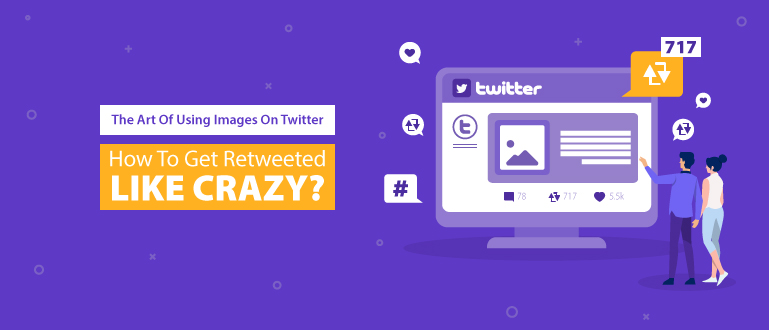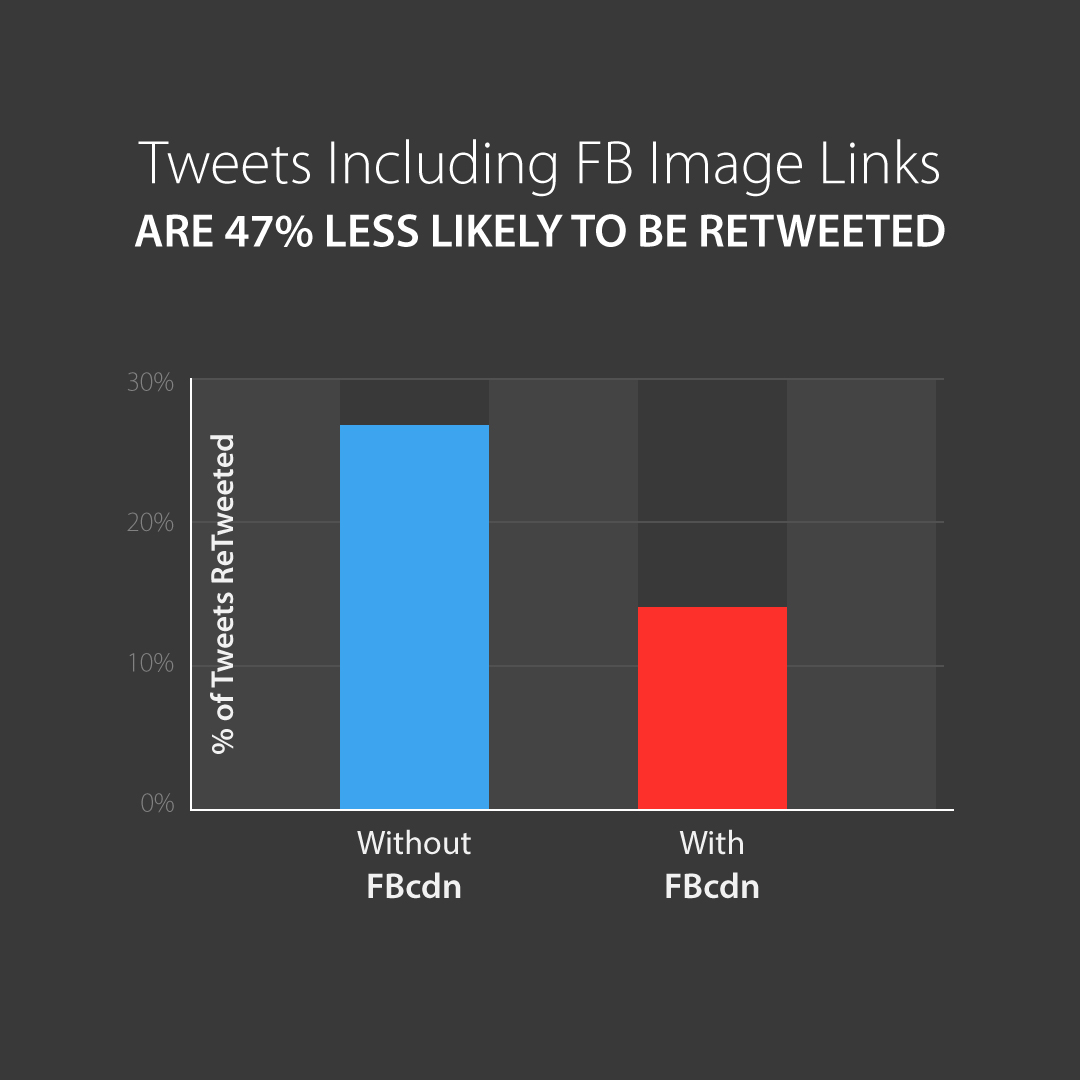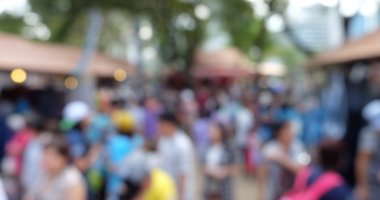
Table of Contents
- Introduction
- Image Source Matters A Great Deal!
- The Right Amount Of Right Hashtags Help Boost
Reach and Retweets! - Re-Share Old Content With New Images And Formats
- Showcase Your Content’s Best Parts
- Make Use Of Screenshots
- Final Words
Introduction
Be it a hilarious meme or an enlightening infographic, if it’s an image, it can boost your odds of unlocking some real engagement on Twitter.
Since the beginning of time, images on Twitter have been working charms for marketers. From attaining incredible user attention to dramatically lubricating sales funnels, they can do it all and that too by almost 89%.
But does Twitter success come that easy?
Even though Twitter has a huge user base of over 335 million, engagement on Twitter is largely determined by retweets. And that I tell you, can get the best in a sweat. But don’t worry.
Right before you panic, you can learn how to get more retweets for your images with these simple steps.
Image Source Matters A Great Deal!

Tweets with pictures from pic.twitter.com get 94% more retweets as compared to pictures from other sources combined.
Although, Facebook and Instagram are two of the most popular sources of images on Twitter, turns out they actually kill the reach.
The lifespan of an average tweet is 18 minutes.
With a myriad of tweets being posted every second, being lost on Twitter is as normal as waking up in your bed every day.

And then as the use of Facebook and Instagram pictures thins down the chances of your post earning retweets (by 47% and 42% respectively), it’s better to avoid them.

Instead, you can simply upload pictures for all your tweets.
The Right Amount Of Right Hashtags Help Boost Reach and Retweets!
Hashtags form an important part of social media and microblogging platforms like Twitter and Instagram. What they do is increase your reach and label your content for algorithms and users.
But can we go all gaga about these? Certainly not.
While Tweets containing hashtags receive 2 times more engagement than those that don’t, tweets with more than 2 hashtags are a plain turn-off. They drop down the engagement by 17%.
So, what can we do?
Simple, use the right hashtags in the right amount. Use tools like Hashtagify and Twitter analytics to find the best hashtags in your niche. Get the right images and tweet with your hashtag by uploading those directly to twitter.
Also, note that tweets with one hashtag are 69% more likely to be retweeted, when compared to tweets with multiple hashtags.
A couple of tips for you: 1) Never use hashtags in your ads. 2) Pick hashtags that are more trending and less generic.
Re-Share Old Content With New Images And Formats
One of the best ways of leveraging the power of visual marketing is this.
For a better understanding, suppose you wrote an article about ‘health benefits of sleeping’ a week ago and distributed it over different media platforms. Now, you want to enhance its reach and draw more attention and engagement towards it. You go on to re-sharing it and it performs worse than the first time.’
Don’t worry. It’s not a nightmare but plain reality. That’s just how algorithms work these days. Also, re-sharing your old posts with the same format and images will make your timeline look stale.
So, the next time you re-share keep the following things in mind.
Retweetable Images
: One great way of boosting engagement on your old content pieces/links is using new “retweetable” images. The idea is to use graphics which compel the users to click through and/or retweet.
Shorten URLs wisely
While the amazeballs set of graphics that you created is great, CTR and the number of retweets that it receives would also depend on your link’s URL structure. So, shorten your URLs and do it wisely. For example, some URL shorteners reap retweets easily, while others just inhibit the reach. To learn better, see the URL shortener retweetability graph below.
This simply means that URL structure greatly affects the number of retweets that your content receives.
Try different formats
Another hack to a better reach and more engagement with your old content on Twitter is to incorporate new images with new formats. Don’t get it? Ann Smarty of Social Media Sun explains it well. She suggests to write out 7-10 different ways for posting a tweet with a link and new graphic every time. The next thing you do is release it at different hours throughout the day. And if you want to space them out more, simply post them once in a day. This will keep your audience reminded of your important content without boring them. For a better idea, look at the templates she designed.- Tweet title + the link
- Tweet a short title + the link + tag mentioned users or tools
- Start with the popular hashtag – that makes sense (example: #HowTo)
- Ask a question or a contribution
- Tweet a quote from the page
- Tweet a Pin from that blog post
- Retweet someone who tweeted your blog post
Basically, if you took your old content pieces for dead, there’s a twist. You can bring them back to life with the right use of tweetable graphics amalgamated with different text formats.
Showcase Your Content’s Best Parts
Let us assume, you created an amazing explainer video for your brand and want to share it with your social media followers. Now, there can be two general ways of doing that.
- You share the link with or without the video preview
- You screenshot the best part of your video and use it as either a thumbnail or as an image in your tweet.
What sounds better? Well, the latter is really better.
It’s simple. Just how the human brain on social media works. We click through more against pictures that look interesting and catchy. Use it to your advantage and see the results flow in.
Make Use Of Screenshots
Another brick in the wall. Screenshots can work wonders to earn you a spate of retweets.
Tweeting with screenshots is one of the most effective and non-salesy ways of getting more retweets. Take Marie Haynes for example.

She subtly uses screenshots including statistics and graphs.
Similarly, in the example above, she talks about Google’s panda update starring up her tweet with a relevant screenshot of a graph. Now, who can scroll past that?
Best thing is, this can work for all niches. ‘Tweet texts’ backed with graphical and statistical screenshots inflict trust and reliance. Simply giving you a retweet hike.
Final Words
Twitter is a great platform for connecting with leaders and audiences from all niches.
While, posting redundant generic stuff on Twitter might not get you anywhere, using the right images, hashtags, text formats, and other elements can easily bridge the gap between you and twitter success.
In this post, we discussed some of the most effective tips and techniques to master the art of using images on Twitter to get more retweets.
We hope this was helpful.
FAQs
Why Do People Retweet?
People retweet for a wide range of reasons. Here are some of them:
- To share interesting or informative content that can be useful.
- To magnify the reach of a post to help people or brands reach out to a wider audience with their message.
- To build relationships with other Twitter users for communication and networking purposes.
- To add and share one’s opinion or perspective on a post.
- To show support for a cause.
- To get their own content promoted.
How To Get More Retweets?
To get more retweets, here are five things that you can do:
- Use relevant hashtags that are specific to what your content is about.
- Create and post interesting content that strikes a chord with your audience.
- Promote your tweets by sharing them on other social media platforms.
- Post your tweets around the time when your target audience is the most active.
- Run Twitter ads to get your account and tweets seen by more people.
- Collaborate with other Twitter accounts to increase brand awareness.
Why Tweets Get More Likes Than Retweets?
Here are a few reasons why your Tweets might be getting more likes than retweets:
- Retweeting takes more than one click; liking, on the other hand, is only a tap away.
- Likes have a higher visibility than retweets, as Twitter shows liked tweets by mutual connections on a wider scale.
- Likes are more personal as liking implies someone agrees with the post's contents. Retweeting involves sharing information with your followers.
- Retweeting might be used for spamming products or services.





